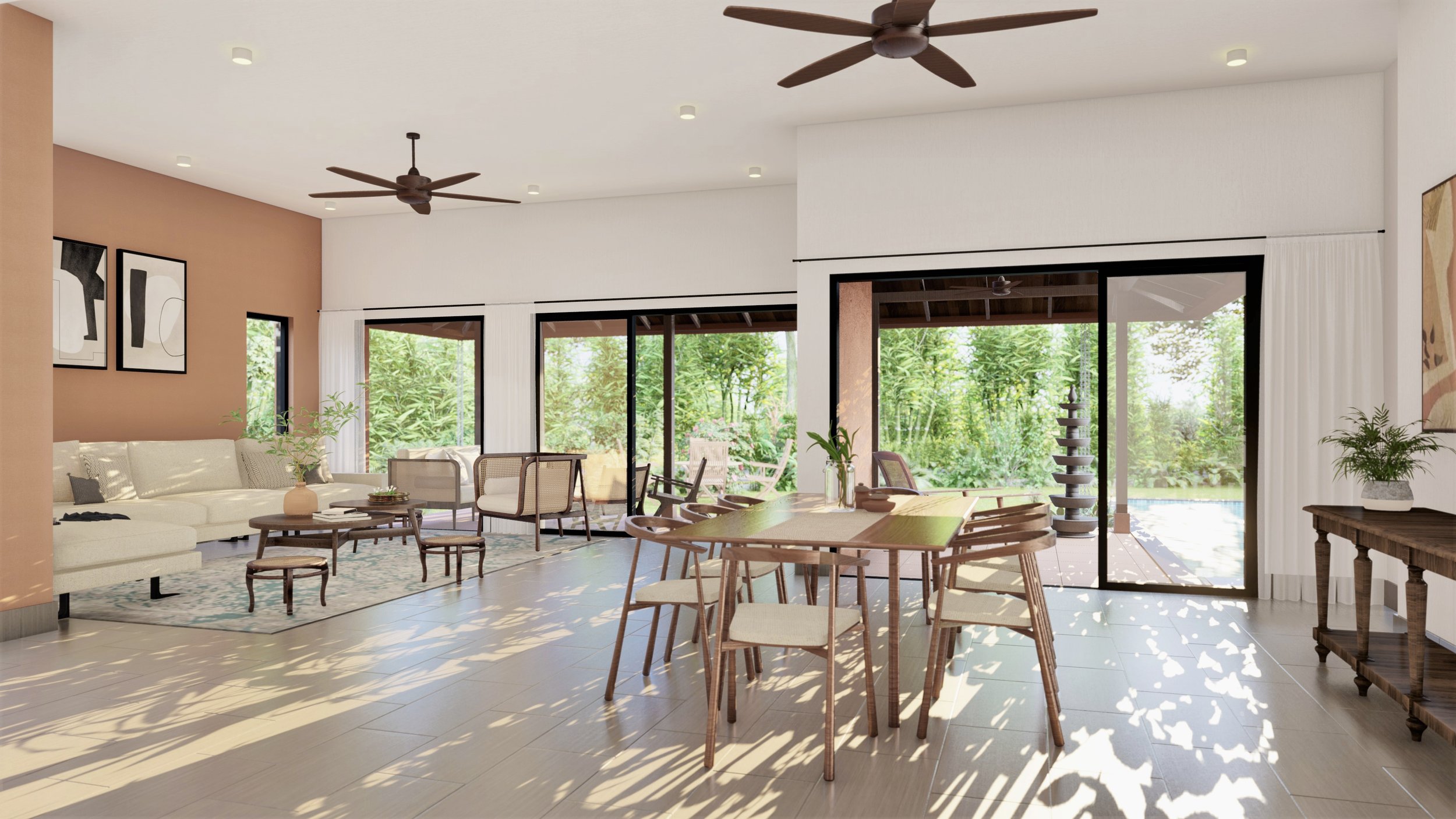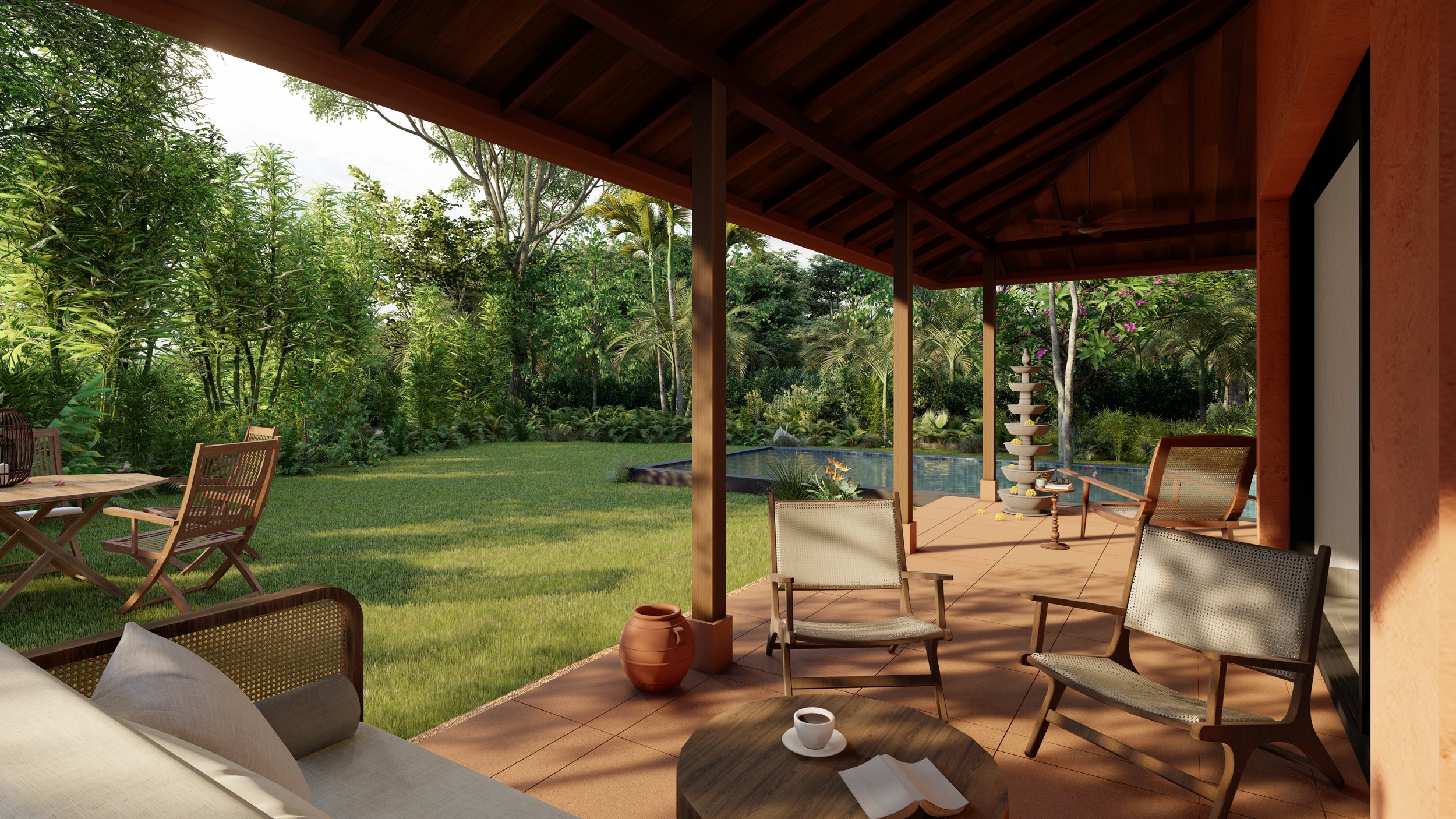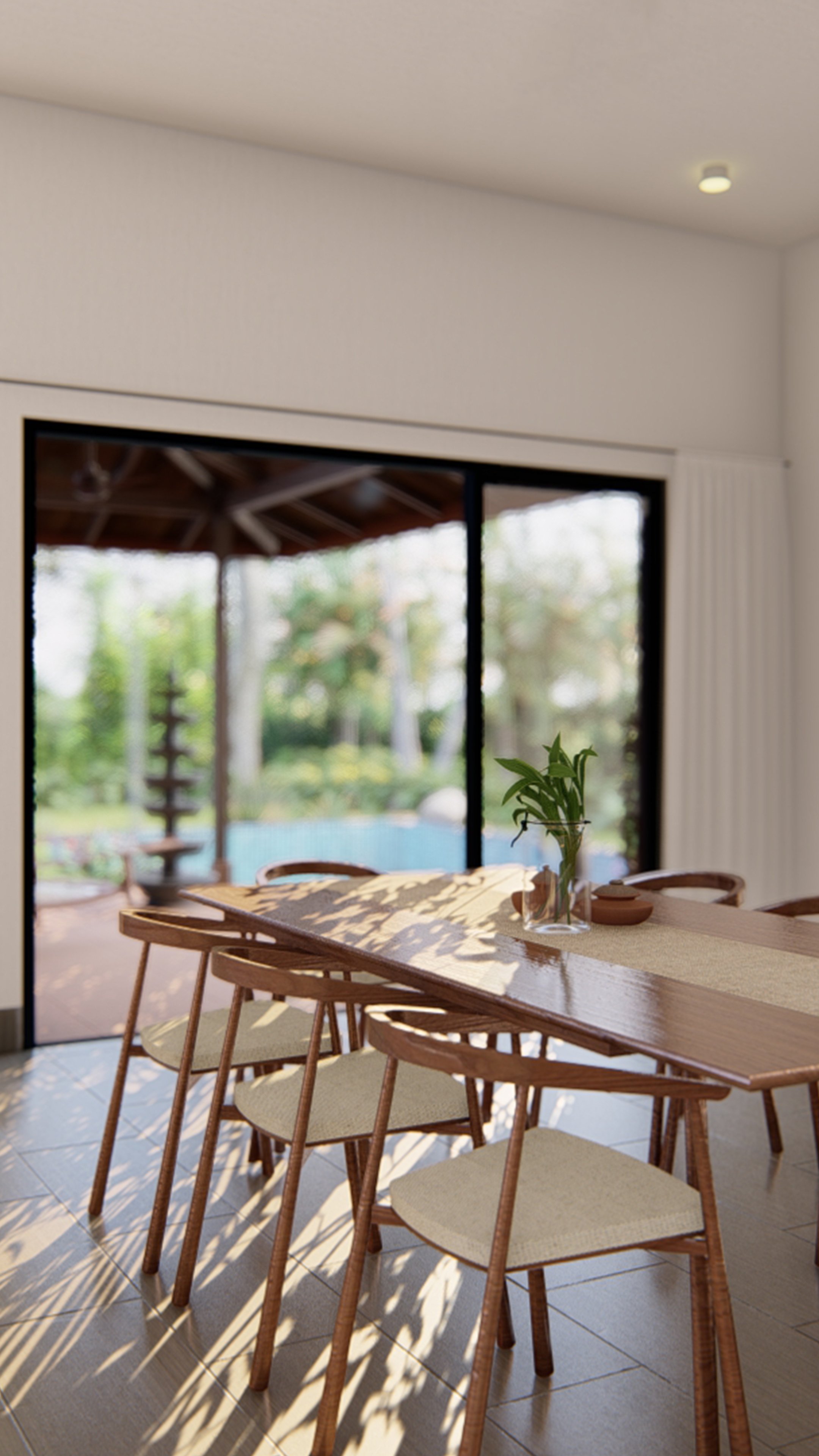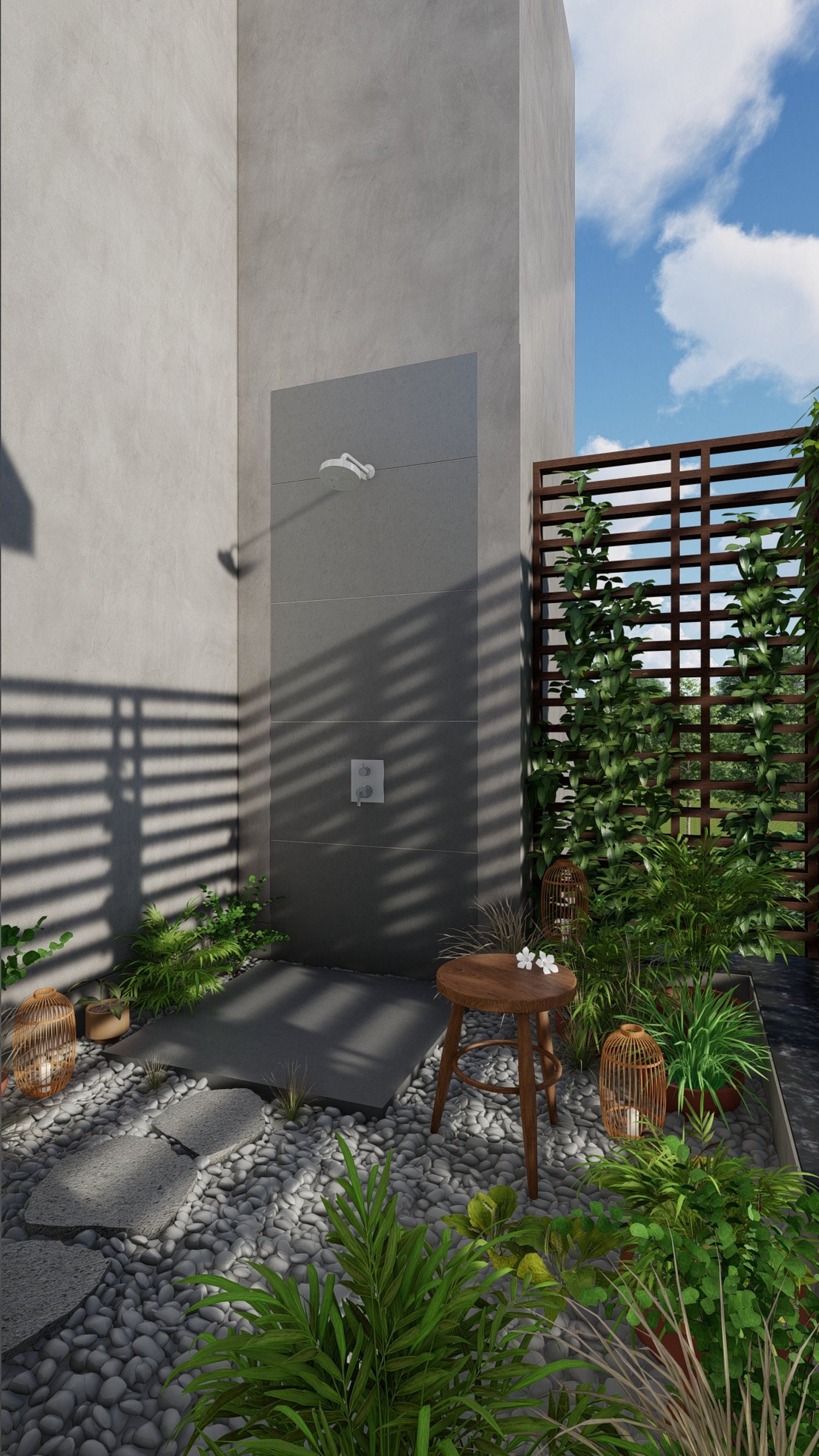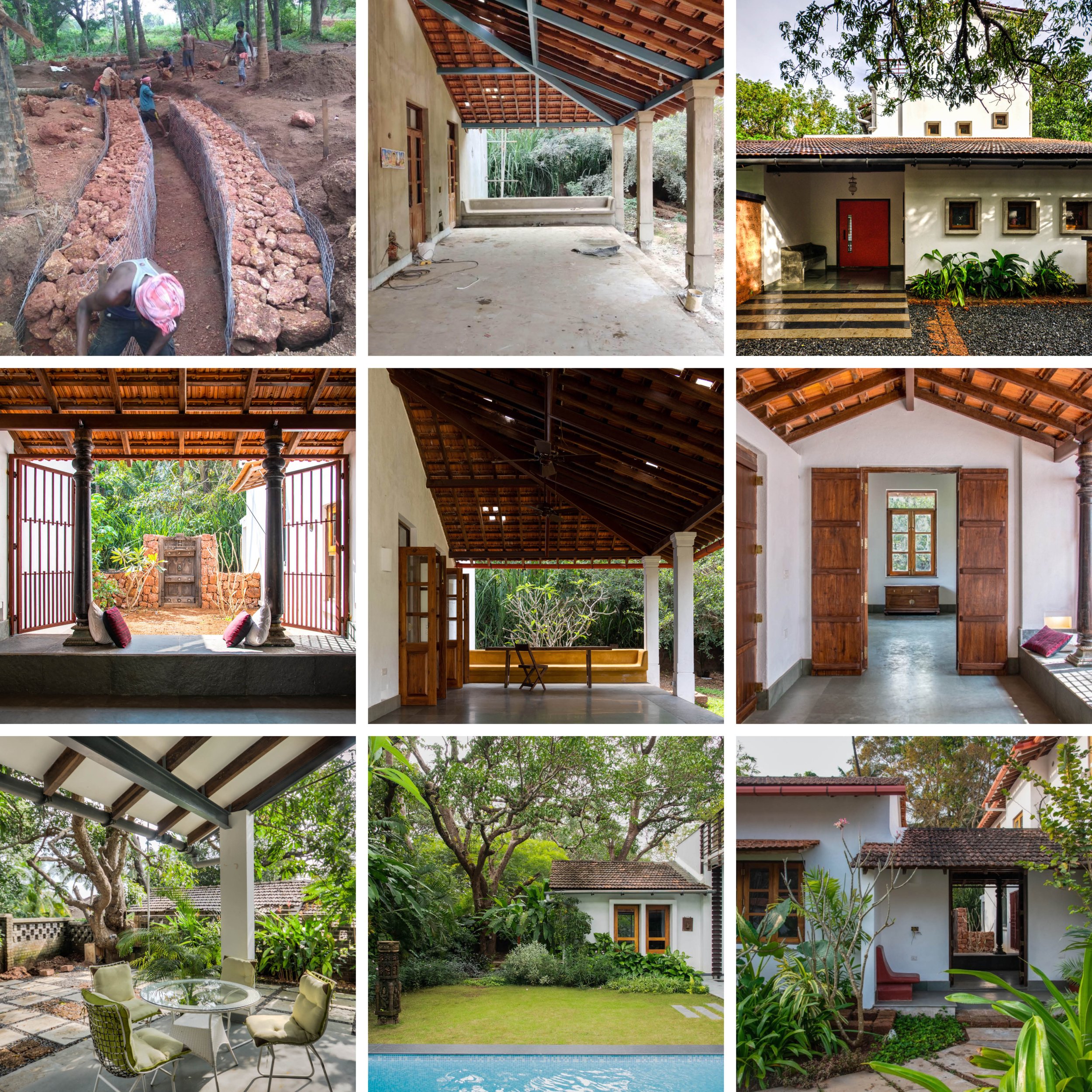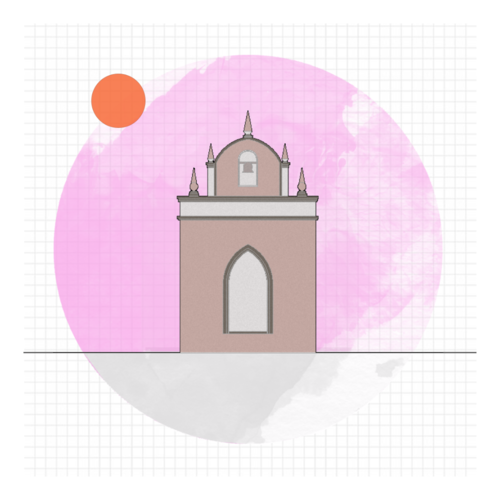A Blog
with a curation of our design ideas and inspiration for houses in Goa, contemporary art and architecture.
Archive
- A Grounded Palette 12
- Architecture 76
- Art 13
- Conservation 3
- Design 34
- Designing a House in Goa 15
- Ecological Design 13
- Environment 29
- Geoffrey Bawa/Bijoy Jain 6
- Goa Ecology 5
- House for Sale in Goa 18
- Interiors 15
- Landscape 3
- Landscape Design 4
- Life 18
- Lifestyle 6
- Living in Goa 26
- Mentoring 4
- Moving to Goa 22
- Navovado Project Update 4
- Nivim Project Update 33
- Press 10
- Resort-style Lifestyle 14
- Sustainable Architecture 16
- Sustainable Design 14
- Wellness 5
Indoor-Outdoor Spaces at Terracotta House
Towards the end of last year, we launched two villas for sale in North Goa. The two villas are located adjacent to each other and are yet independent and unique in their design.
Both villas are 3.5 BHK with a separate study on an approx. 500 sq.m. piece of land. One villa is sold and one villa, the Terracotta House is currently available for sale.
Below are some renderings of the same. Contact us for more details.
An expansive verandah at Terracotta House in Goa
Dining at Terracotta House in Goa
Open Shower at Terracotta House in Goa
The House with Three Pavilions is a sustainable house in Goa, designed and developed by GROUNDED.
The house explores the intimate relationship between the land, its people, water, and the biodiversity that exists in Goa in India. It is designed as a cluster of three pavilions that gently weave around existing trees in an attempt to coexist with nature and to minimize the impact of new construction on virgin land.
The architecture of the house takes inspiration from the surrounding Goan village houses. Mostly constructed as ground-floor structures, each pavilion attempts to match the volumetrics of its village peers. Throughout, a simple sweeping roof form is used in red terracotta tile that is ubiquitous to the Goan village built-landscape. Proportions are borrowed from doors, windows, and plaster bands of vernacular Goan structures even as a distinct contemporary style is articulated in the design.
With a focus on connection with nature, the materials used in the house are kept subtle and natural. All floors are finished with a natural Indian ‘kota’ stone in a blue-green color that merges with the landscape. Pigmented cement and exposed local ‘laterite’ are used extensively to mirror the rustic countryside character. ‘Teak’ is used for doors and windows to add warmth and rich texture to the interiors. Antique wood columns and stone pedestals are also incorporated to bring a sense of luxury and timelessness throughout.
The project also prioritises the enhancement of the site’s resources and biodiversity through a comprehensive water-management system which includes a natural seasonal pond connected to a newly planned system of bioswales. This on-site wetland feature harvests rainwater, recharges depleted underground aquifers, and offsets the load on the public drain system. Furthermore, it preserves the pre-existing site habitat. It is a win to see that insects, birds, and animals continue to find the site a safe space even as they come in close contact with the human life around, making this truly a space for all seasons and species.
We have some much-awaited news!
Grounded will soon be launching 2 new luxury villas for sale in North Goa. Set within beautiful Aldona, the house is surrounded by peaceful green vistas and the rustic charm of the Goan countryside. With expansive living spaces, intimate pockets that look out to the pool, and nearly 3500 sqft of open space, the house seeks to offer seamless indoor-outdoor living. Like all our other residential projects, the villas will be sustainable, architecturally relevant, and closely connected to nature.
To know more about the villas,
It is such a joy to see our project House with Three Pavilions find beautiful space in print and on the cover of Livingetc Magazine’s June 2022 issue. Aptly titled - ‘A Home with A Verandah’, the article draws attention to our countryside Goan house’s tangible connection to nature. It throws light on our tropical modern design approach and celebrates our efforts to create seamless indoor-outdoor spaces that allow our clients to take everyday life outdoors.
Read the published story here.
If you are considering buying a house in Goa, read our blogpost: What to Look For While Buying A House in Goa
To know more about our design process, take a look at: Designing A House in Goa
Life in Goa has a laid-back, luxurious simplicity that is hard to come by in most of our cities today. People who move here are typically looking to leave the rat race behind in pursuit of a slower lifestyle that offers infinite and diverse opportunities to live in harmony with the land, to embrace the local culture, to enjoy the natural abundance as well as savour the bounties brought by changing seasons.
While Goa is a small state, each of its neighbourhoods offer different and unique living experiences. For anyone who is considering moving to Goa or buying a house in Goa, here is a detailed analysis of what one can expect from the neighbourhoods of North Goa.
PANJIM & ITS SURROUNDINGS
Image sourced from The Culture Trip.
PROS:
As the capital city, Panjim is extremely well connected and relatively easier to access. It is a quaint and small town that bridges the old and the new - it offers modern residential amenities while also retaining historic neighbourhoods such as Fountainhas. Panjim, is at its core, a residential area primarily and therefore also has a robust presence of schools around. It is also close to the beach stretches of Miramar, Caranzalem, and Dona Paula.
CONS:
It may not be easy to get a large, spacious house with a backyard in Panjim. The houses available are largely present in apartments and the availability of outdoor space within a plot is hard to come by.
ALDONA, MOIRA & POMBURPA
Image sourced from Tripoto.com
PROS:
Located to the east of the highway, these are quaint villages in North Goa that are positioned at a distance from the beach belt and are therefore saved from Goa’s maddening tourist crowds. The villages offer a quiet lifestyle meant for people who want to coexist with locals and enjoy the real Goa. However, these areas have been gaining popularity over the last ten years as prime locations for countryside vacation homes. These areas typically contain vacation houses built by expats and Indians who live abroad.
CONS:
It is a bit of a trek to the beach from these areas. The closest beaches are about 40-45 minutes away. These areas are also sought after for their pristine and undisturbed natural habitats. Thus, one should expect to entertain the local flora and fauna in their home.
ASSAGAO & SIOLIM
Image sourced from Ghoomophiro.com
PROS:
These were traditionally well-to-do villages that today have some gorgeous and large heritage houses. These villages are closer in proximity to the beach belt and see a lot of local as well as tourist activity. The neighbourhood hosts multiple restaurants and stores of different kinds, so it is charged with buzz, life, and movement throughout the day.
CONS:
Unfortunately, the quintessential quietude of Goa is no longer to be found in these areas. Commercial activity has taken over and most parts of these villages are overbuilt in the name of development.
NERUL, BETHE & REIS MAGOS
Image sourced from Alvira-Ventures
PROS:
These are pictureque villages that are steeped in history. They are also strategically located. Positioned midway between the Candolim beach belt and Panjim, they make the beachside as well as the townside easily accessible.
CONS:
Gentrification has rapidly taken over these areas as well. It may be possible to get a beautiful row house in these areas, however, bigger houses and larger plots will not be easy to come by.
To compare North Goa and South Goa, visit our analysis here.
To know more about building a house in Goa, read our series: Designing a House in Goa
We have recently started work on a small house for a lovely young family in Talpona village in Goa. The focus will be on indoor-outdoor living and creating opportunities to connect with nature. The project site is contoured and verdant, with lush trees meeting the eye every side we turn. Our vision for the project is to bring land and life together, through timeless contemporary-vernacular architecture. As we explore the relationships between space and site, we ask ourselves repeatedly,
What are the views that we can frame? How can we create open, continuous and connected spaces? How much light and breeze comes through? How can we create pockets around different natural clusters? How will each space change with time to allow for multiple experiences?
If there is one market that truly embodies the spirit of Goa, it has to be Mapusa Market. Mapusa is an incredible medley of sight, sound and colour everyday but its Friday bazaars are a sight to behold. It comes alive with the swish of textile, the clang of metal and the aroma of fresh spices as local vendors from all over Goa flock together to sell their wares.
Mapusa Market has always been one of the primary centers for trade and shopping in Goa for many decades now. In fact, the story goes that the market grew to be so significant, that the town that developed around it was derived from the business conducted at the market. The Konkani words, “map” (meaning to measure) and “sa” (meaning to fill up) are combined to form the word mapusa.
We came across some brilliant visual documentation of Mapusa’s repair shops, fabric stores flower bazaars, and condiment outlets curated by the Mapping Mapusa Market project and this blogpost is an ode to the exhaustive research that they have done.
Stories of Repair and Recycle by Sahil Konkar
A series of videos by Sahil and Prashant that heroes the people that put our lives together. Read more about the famous repair points in Mapusa Market here and watch them in action using the playlist below.
Flower Power by Mythili Borkar
Flower Power immortalises the potent yet delicate imagery that make up Mapusa’s flower bazaar, as well as the aspirations tied to them. Find the seies in focus here.
Mapping Sugarcane by stanzinlosal
The story of 8 sugarcane juice shops spread across Mapusa Market, Goa has been mapped and developed into short films. Find this lovely story here.
Completed in 2014, these visual histories offer amazing perspective into the Mapusa and Goa of today and the many layers of their making. It helps develop a cohesive understanding of the relationships between place, space, activity, and community.
If you are ever in Goa, definitely pay a visit to witness the life and times of Mapusa Market.
To read about the different places and experiences Goa has in store for you, visit our map - Goa At A Glance.
To know more about North and South Goa, visit our blogpost on North Goa vs South Goa
To visit South Goa’s stunning bungalows, take a look at our top picks here.
Photograph of Nivim, by Bharath Ramamrutham
The opportunity to build on a contoured site can be both a challenge and a blessing. Even as it requires unique structural solutions, a contoured plot of land offers great design advantages. The sloping site automatically facilitates unobstructed views. It allows the building envelope to feel like a private sanctuary because there is no close visual connection with other neighbouring buildings beneath or above. The rolling site terrain also allows the architecture to cascade, creating multiple distinct ways of experiencing the space and its surroundings. For our houses in Goa, we use the following principles to build on terraced sites sensitively and sustainably.
When we build on a contoured site, we refrain from cutting or filling excessively. As a principle, the land topography is retained as much as possible.
Every contoured site speaks a unique story. The soil, water and vegetation indicate how the site fits into the regional topography. The natural paths created indicate how water flows through the site from higher to lower contours. While designing, we like to take a site positive approach and make minimum alterations to these existing natural systems. This ensures that we are not tampering with the natural water flows within the site, hence avoiding any unexpected flooding during the abundant monsoon in Goa.⠀
We also like to keep the site land around these water channels permeable without any cement cover. The natural paving ensures that there is a simple but high functioning rain water harvesting system where water is allowed to percolate into the ground and does not flow down and away from the site, preventing any water deficits in the future.
One of our first steps on any site is to understand everything there is to know about the greenery. The kind of vegetation usually indicates where the water collects on site and shows the different kinds of life forms within the site. It helps in developing a cohesive ecological response strategy while designing.
Understanding the vegetation also helps us design and build with nature. Unlike flat sites, where one would typically only see the base or trunk of a tree from ground level, a contoured site allows one to interact with the dense foliage of a tree on a higher level and the woody bark of another tree on a lower level simultaneously. We try to find these vistas to celebrate and curate through architecture.
We look for terrain and topo sheets to place the site inside its regional context. Most of these sheets are easy to access, available online, and are often on university websites. Once we have an initial understanding of the levels, we model the site in 3D using software such as Google Earth, SketchUp, and Rhino. Most of these software also allow us to geo-locate our contoured plot to check for accuracy.
While proposing a design, we usually look at a maximum of a 1m level difference from one space to another. This is done to avoid cutting and filling as much as possible and to move with the land terrain.⠀
We love to use a material palette that is either sourced locally or naturally and build using local construction techniques. We take cues from the surrounding sites and buildings around us to identify the most effective and least intrusive construction methods for every piece of land we build on.
Practicing these simple steps helps us to build sustainably and design houses that are gentle on the land they stand on. To know more about the methods, tips, tricks and processes we follow while designing, visit our blog series, Designing A House In Goa.
In this IG Live session, we speak to Monish Siripurapu, Founder of Ant Studio in Delhi, India. Studio Ant works at the intersection of art, nature, and technology. Through their research and development wing Coolant they have made strides in building sustainable innovations through their all natural air cooling products. In this conversation, we discuss the science and method behind building this cooling system. We understand the system of Evaporative Cooling and the opportunities it presents in different contexts. We also speak about the process of research behind building this product and explore the nuances of parametric design. Tune in to watch our entire conversation.




